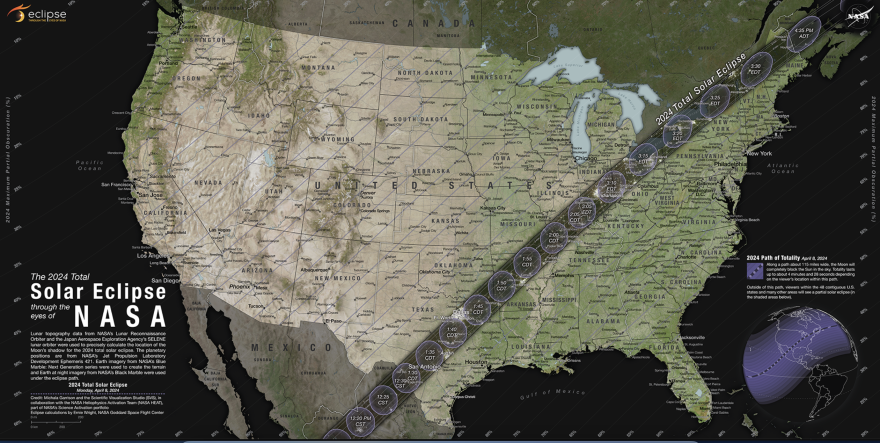Solar winds, magnetic fields and coronal mass ejections — how hot are they? Such is the world of Shadia Habbal from the University of Hawaiʻi Institute for Astronomy.
Habbal has been trying to determine the temperature of the sun's corona — its outer atmosphere — for at least the last decade and a half.
She is en route to Arkansas for the best viewing of the total solar eclipse on April 8. Hawaiʻi will only have a partial view.

Habbal has chased eclipses all over the world. It takes years of planning to gather valuable data during just a few fleeting minutes of an eclipse.
Unlike the Daniel K. Inouye Solar Telescope fixed atop Haleakalā on Maui, the telescopes used by Habbal and her team of about 40 researchers are moved around to outposts with the best views.
Her team will be stationed in Texas, Arkansas and Mexico — all along the eclipse's path. The Conversation spoke with Habbal while she was in Houston, on her way to Arkansas.
"The sun is going through a cycle of activity, and this year, it will be at the peak of its activity. So you, one, would expect to see more dynamic events such as large, you know, explosive events or large what we call coronal mass ejections, which we hope to capture one during totality. And it's a long enough eclipse that we can get really a lot of data, and if the weather cooperates, the data quality should be very high," Habbal said.
"Our hope is from the data we're collecting, we'll try to get a better understanding of the physical processes that are going on, and to try to figure out if we can predict when a coronal mass ejection is going to interfere with the Earth's magnetic environment."
Habbal's team includes students from the University of Hawaiʻi.
This story aired on <i>The Conversation</i> on April 2, 2024. The Conversation airs weekdays at 11 a.m. on HPR-1.





